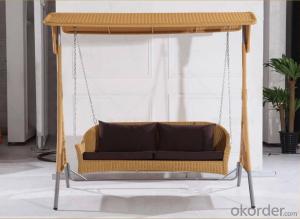Avanti Aluminum Plate
Avanti Aluminum Plate Related Searches
Led Light Bulbs For Ceiling Fixtures Led Lamps For Ceiling 42 In Ceiling Fan With Light Aluminum Coil Stock For Gutters Aluminum Foil For The Grill Hole Saw For Aluminum Plate Aluminum Tread Plate For Trailer Bow Plate For Aluminum Boat Aluminum Foil For Grow Room Aluminum Foil For Joint PainHot Searches
Stock Price For Aluminum Aluminum Coil Stock For Sale Aluminum Gutter Coil For Sale Used Aluminum Scaffolding For Sale 1/4 Aluminum Plate For Sale Aluminum Bar Stock For Sale Aluminum Round Stock For Sale Aluminum Diamond Plate For Sale Aluminum Scaffolding For Sale Craigslist 6061 Aluminum Plate For Sale Aluminum Dock Plate For Sale 7075 Aluminum Plate For Sale Aluminum Tread Plate For Sale Aluminum Checker Plate For Sale Aluminum Plate For Sale Near Me Plate Aluminum For Sale Aluminum Plate For Sale Aluminum Square Stock For Sale Aluminum Flat Stock For Sale Billet Aluminum Stock For SaleAvanti Aluminum Plate Supplier & Manufacturer from China
Okorder.com is a professional Avanti Aluminum Plate supplier & manufacturer, offers integrated one-stop services including real-time quoting and online cargo tracking. We are funded by CNBM Group, a Fortune 500 enterprise and the largest Avanti Aluminum Plate firm in China.Hot Products
FAQ
- Aluminum sheets find common usage within the aerospace industry due to their numerous desirable qualities. One of the foremost advantages is their lightweight nature, a critical factor for both aircraft and spacecraft. This characteristic aids in reducing fuel consumption and increasing the capacity for payload. Another significant attribute of aluminum is its exceptional strength-to-weight ratio, which imparts structural integrity to aerospace components. Furthermore, aluminum exhibits high resistance to corrosion, ensuring longevity and durability within harsh environments. Additionally, its commendable thermal conductivity qualifies it for heat dissipation in aerospace systems. Moreover, aluminum boasts easy formability, enabling the manufacturing of intricate shapes and structures. In summary, the versatility, strength, lightness, and corrosion resistance of aluminum make it the material of choice in the aerospace industry for diverse applications, including aircraft frames, fuselage panels, wings, and engine components.
- Yes, aluminum sheets can be used as reflective insulation. Aluminum has excellent reflective properties, allowing it to reflect heat and light effectively. This makes it a suitable material for insulating applications where reflecting radiant heat is desired, such as in roofs, walls, or attics.
- Aluminum sheets find frequent usage in aerospace industries. Lightweight and resistant to corrosion, aluminum proves to be an exceptional material with a remarkable strength-to-weight ratio, making it well-suited for diverse aerospace applications. Its capability to withstand elevated stress and pressure renders it valuable in the construction of aircraft structures, including wings, fuselage, and landing gear. Moreover, aluminum sheets possess malleability, allowing for the creation of intricate shapes that contribute to the requisite design flexibility within the aerospace sector. However, it is worth noting that aluminum alloys, rather than pure aluminum, are typically employed in aerospace applications due to their augmented mechanical properties and superior performance.
- I am doing a project on Aluminum it has 13 protons just to make sure everyones on the same page. How much of it is left or exsits? Also how does it behave?
- As Vincent noted, aluminium is an abundant element in the earth's crust. It occurs in all clay minerals. Its main ore, bauxite(a mixture of aluminium hydroxides) is still available in vast deposits; particularly in Australia and South America. Aluminium is a reactive element, and so is not found in nature in the elemental form. Aluminium is a metal, and an amphoteric substance; that is; it reacts with both acids and bases.
- Yes, aluminum sheets are suitable for heat sinks. Aluminum is a lightweight and highly conductive metal, making it an excellent choice for dissipating heat. It has a high thermal conductivity, which means it can efficiently transfer heat away from the source and spread it across a larger surface area. Additionally, aluminum has good corrosion resistance, which is important for heat sinks that may be exposed to moisture or other environmental factors. The malleability and ease of fabrication of aluminum sheets also make them versatile for creating various heat sink designs to meet specific cooling requirements. Overall, aluminum sheets are widely used in heat sink applications due to their excellent thermal conductivity, lightweight nature, corrosion resistance, and ease of manufacturing.
- What are the common aluminum sheets and the best ones?
- Look, what's your use for it?. Aluminum alloy is divided into 1000 series and 9000 series, each series has the characteristics and uses of each series. The most commonly seen aluminum plate is 1060 (pure aluminum), 2024, 5052, 6061, 6063, 7075, 6083, 5082 aluminum alloy plate. The best should be imported 7000 series, but also depends on your use to say.
- Aluminum sheets, by themselves, are not suitable for thermal insulation. Despite aluminum's ability to conduct heat and electricity well, it lacks sufficient insulating properties. Surprisingly, instead of blocking heat, aluminum sheets can actually transfer it, rendering them ineffective for thermal insulation purposes. To achieve proper thermal insulation, it is common to use materials with low thermal conductivity, such as fiberglass, mineral wool, or foam boards. These materials are specifically engineered to trap air or establish a barrier that minimizes heat transfer, thus ensuring efficient insulation.
- I need to know what composite bats do and how (or if) they are better than aluminum bats.
- This Site Might Help You. RE: What is the difference between composite bats and aluminum bats? I need to know what composite bats do and how (or if) they are better than aluminum bats.














































